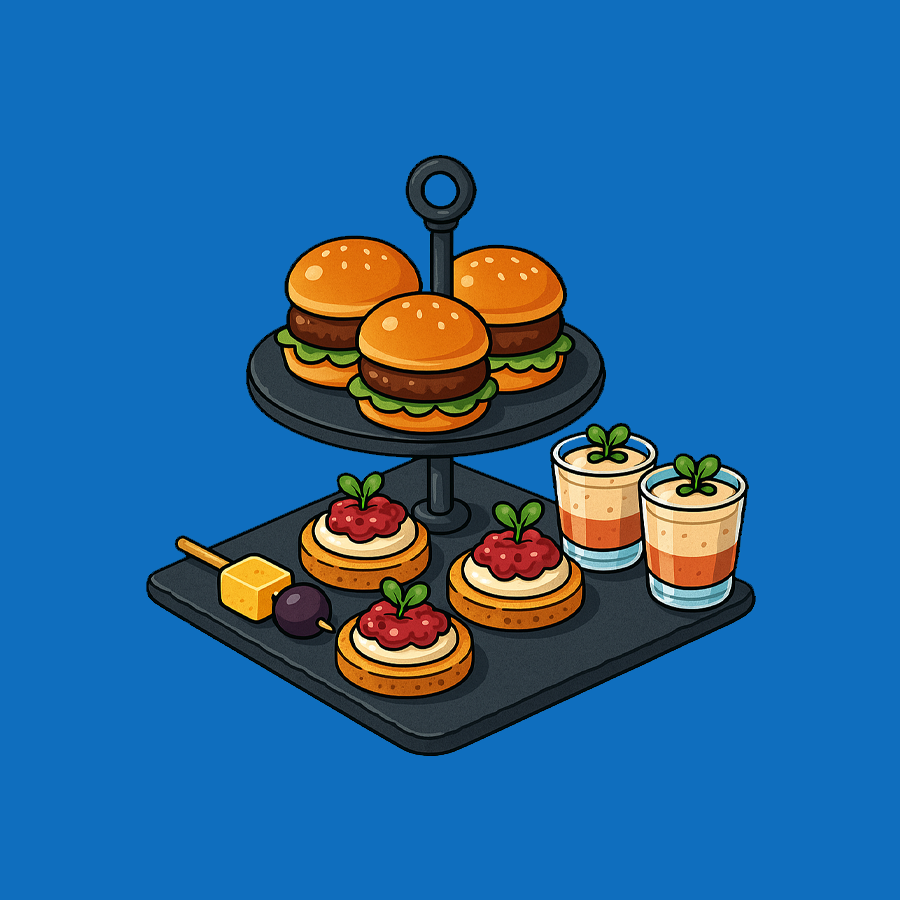Introduction
Whether it’s a single, perfect canapé or an artfully arranged grazing table, small bites make a big impression. There’s something about miniature foods that draws people in—maybe it’s their elegance, maybe it’s their approachability—but the result is the same: guests love them.
But why do these tiny portions pack such a punch? The answer lies in psychology, flavor science, and smart event planning. In this blog, we’ll explore why miniature foods are strategic catering powerhouses and how tools like Caterease make it easy to design and manage small-plate-heavy menus for any event.
The Psychology Behind Small Bites
Small bites aren’t just about presentation—they’re about perception.
1. Less Commitment = More Curiosity
Guests feel less pressure to commit to unfamiliar flavors or ingredients when the portion is tiny. It’s safe to experiment.
2. Abundance Through Variety
Multiple small bites give guests the feeling of abundance and indulgence, even if total portions are controlled.
3. Encouraging Social Interaction
Small bites encourage movement and mingling, turning the act of eating into a conversation starter.
The Science of Flavor & Portion Perception
There’s actual food science behind why small bites taste so satisfying.
1. Flavor Concentration
In small portions, flavors can be intensified without overwhelming the palate. The right balance of acid, salt, fat, and texture hits faster and stronger.
2. Texture Play
Small bites make contrasting textures pop. Crisp crackers, creamy spreads, crunchy toppings—all can shine in one bite.
3. Portion Size & Satiety
Smaller portions let guests pace themselves, avoiding early satiety while still feeling satisfied over time.
Why Small Bites Work for Events
Beyond science and psychology, small bites solve logistical challenges at events.
1. Encouraging Flow
Small bites are easy to eat while standing—no need for utensils or formal seating. This keeps energy and movement high, especially during cocktail hours or networking sessions.
2. Catering to Dietary Diversity
It’s easier to offer vegan, gluten-free, dairy-free, or nut-free options in small portions without overcomplicating the main menu.
3. Supporting Thematic Storytelling
Each small bite can represent a different region, flavor profile, or seasonal theme, giving caterers a canvas for creativity.
Creative Presentation Ideas for Maximum Impact
1. Play with Vessels

2. Use Verticality & Color

3. Interactive Stations
Managing Small-Bite Menus at Scale
1. Prep & Pacing

2. Use Caterease for Smooth Execution


With Caterease, caterers can manage high-volume, diverse appetizer menus without the stress, keeping the service seamless and the guests happy.
Conclusion
In the world of catering, small bites make a big impact. They offer variety, flexibility, and a powerful sensory experience, without overwhelming guests.
By understanding the science of flavor perception and using strategic presentation and planning, caterers can turn miniature foods into a major highlight of any event.
And with tools like Caterease, managing even the most complex small-plate menus becomes easy, helping you focus on what matters most: delivering an unforgettable experience—one bite at a time.
Frequently Asked Questions (FAQ)
1. How many small bites should I serve per guest at an event?
Plan for 6–8 bites per person for a cocktail hour, or 10–12 for a light meal replacement. Adjust based on event length and flow.
2. How do I keep small bites fresh during service?
Stagger prep and plating in batches. Use station rotations or tray-passing schedules to maintain variety and freshness.
3. Can small bites accommodate multiple dietary needs?
Absolutely! Small bites are a great way to offer dietary diversity. Use labeling and station separation to ensure clarity.
4. How does Caterease help with managing small-bite menus?
Caterease tracks item quantities, guest preferences, and dietary restrictions, and helps coordinate service timing and station assignments for smooth execution.
5. Are small bites more labor-intensive?
They can be—but with planning and tools like Caterease, managing prep, service pacing, and logistics becomes much easier.

